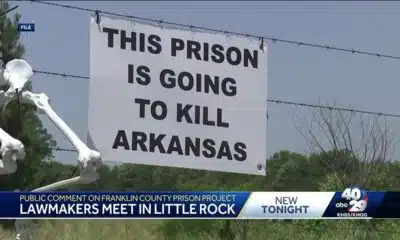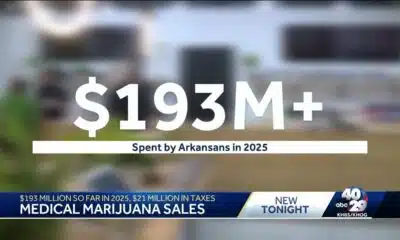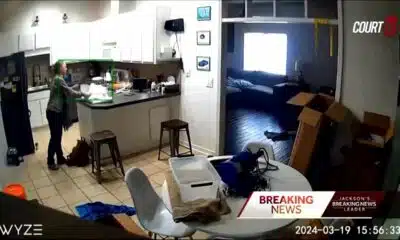Kaiser Health News
What Does a Chatbot Know About Eating Disorders? Users of a Help Line Are About to Find Out
by Kate Wells, Michigan Radio
Mon, 12 Jun 2023 09:00:00 +0000
For more than 20 years, the National Eating Disorders Association has operated a phone line and online platform for people seeking help for anorexia, bulimia, and other eating disorders. Last year, nearly 70,000 individuals used the help line.
NEDA shuttered that service in May, saying that, in its place, a chatbot called Tessa, designed by eating disorder experts with funding from NEDA, would be deployed.
When NPR aired a report about this last month, Tessa was up and running online. Since then, both the chatbot’s page and a NEDA article about Tessa have been taken down. When asked why, NEDA said the bot is being “updated,” and the latest “version of the current program [will be] available soon.”
Then NEDA announced on May 30 that it was indefinitely disabling Tessa. Patients, families, doctors, and other experts on eating disorders were stunned. The episode has set off a fresh wave of debate as companies turn to artificial intelligence as a possible solution for a mental health crisis and treatment shortage.
Paid staffers and volunteers for the NEDA help line said that replacing the service with a chatbot could further isolate the thousands of people who use it when they feel they have nowhere else to turn.
“These young kids … don’t feel comfortable coming to their friends or their family or anybody about this,” said Katy Meta, a 20-year-old college student who has volunteered for the help line. “A lot of these individuals come on multiple times because they have no other outlet to talk with anybody. … That’s all they have, is the chat line.”
The decision is part of a larger trend: Many mental health organizations and companies are struggling to provide services and care in response to a sharp escalation in demand, and some are turning to chatbots and AI, even though clinicians are still trying to figure out how to effectively deploy them, and for what conditions.
The help line’s five staffers formally notified their employer they had formed a union in March. Just a few days later, on a March 31 call, NEDA informed them that they would be laid off in June. NPR and KFF Health News obtained audio of the call. “We will, subject to the terms of our legal responsibilities, [be] beginning to wind down the help line as currently operating,” NEDA board chair Geoff Craddock told them, “with a transition to Tessa, the AI-assisted technology, expected around June 1.”
NEDA’s leadership denies the decision had anything to do with the unionization but told NPR and KFF Health News it became necessary because of the covid-19 pandemic, when eating disorders surged and the number of calls, texts, and messages to the help line more than doubled.
The increase in crisis-level calls also raises NEDA’s legal liability, managers explained in an email sent March 31 to current and former volunteers, informing them that the help line was ending and that NEDA would “begin to pivot to the expanded use of AI-assisted technology.”
“What has really changed in the landscape are the federal and state requirements for mandated reporting for mental and physical health issues (self-harm, suicidality, child abuse),” according to the email, which NPR and KFF Health News obtained. “NEDA is now considered a mandated reporter and that hits our risk profile — changing our training and daily work processes and driving up our insurance premiums. We are not a crisis line; we are a referral center and information provider.”
Pandemic Created a ‘Perfect Storm’ for Eating Disorders
When it was time for a volunteer shift on the help line, Meta usually logged in from her dorm room at Dickinson College in Pennsylvania.
Meta recalled a recent conversation on the help line’s messaging platform with a girl who said she was 11. The girl said she had just confessed to her parents that she was struggling with an eating disorder, but the conversation had gone badly.
“The parents said that they ‘didn’t believe in eating disorders’ and [told their daughter], ‘You just need to eat more. You need to stop doing this,’” Meta recalled. “This individual was also suicidal and exhibited traits of self-harm as well. … It was just really heartbreaking to see.”
Eating disorders are common, serious, and sometimes fatal illnesses. An estimated 9% of Americans experience an eating disorder during their lifetimes. Eating disorders also have some of the highest mortality rates among mental illnesses, with an estimated death toll of more than 10,000 Americans each year.
But after covid hit, closing schools and forcing people into prolonged isolation, crisis calls and messages like the one Meta describes became far more frequent on the help line.
In the U.S., the rate of pediatric hospitalizations and ER visits surged. On the NEDA help line, client volume increased by more than 100% compared with pre-pandemic levels.
“Eating disorders thrive in isolation, so covid and shelter-in-place was a tough time for a lot of folks struggling,” explained Abbie Harper, who has worked as a help line associate.
Until a few weeks ago, the help line was run by just five to six paid staffers and two supervisors, and it depended on a rotating roster of 90-165 volunteers at any given time, according to NEDA.
Yet even after lockdowns ended, NEDA’s help line volume remained elevated above pre-pandemic levels, and the cases continued to be clinically severe. Staffers felt overwhelmed, undersupported, and increasingly burned out, and turnover increased, according to multiple interviews.
The help line staff formally notified NEDA that their unionization vote had been certified on March 27. Four days later, they learned their positions were being eliminated.
“Our volunteers are volunteers,” said Lauren Smolar, NEDA’s vice president of mission and education. “They’re not professionals. They don’t have crisis training. And we really can’t accept that kind of responsibility.” Instead, she said, people seeking crisis help should be reaching out to resources like 988, a 24/7 suicide and crisis hotline that connects people with trained counselors.
The surge in volume also meant the help line was unable to respond immediately to 46% of initial contacts, and it could take six to 11 days to respond to messages.
“And that’s frankly unacceptable in 2023, for people to have to wait a week or more to receive the information that they need, the specialized treatment options that they need,” Smolar said.
After learning in the March 31 email that the helpline would be phased out, volunteer Faith Fischetti, 22, tried out the chatbot on her own, asking it some of the more frequent questions she gets from users. But her interactions with Tessa were not reassuring: “[The bot] gave links and resources that were completely unrelated” to her questions, she said.
Fischetti’s biggest worry is that someone coming to the NEDA site for help will leave because they “feel that they’re not understood, and feel that no one is there for them. And that’s the most terrifying thing to me.”
A Chatbot Can Miss Red Flags
Tessa the chatbot was created to help a specific cohort: people with eating disorders who never receive treatment.
Only 20% of people with eating disorders get formal help, according to Ellen Fitzsimmons-Craft, a psychologist and associate professor at Washington University School of Medicine in St. Louis. Her team created Tessa after receiving funding from NEDA in 2018, with the goal of looking for ways technology could help fill the treatment gap.
NEDA said Tessa was supposed to be a “rule-based” chatbot, meaning one that is programmed with a limited set of possible responses. It is not ChatGPT and cannot generate unique answers in response to specific queries. “So she can’t go off the rails, so to speak,” Fitzsimmons-Craft said.
The plan was for Tessa to guide users through an interactive, weeks-long course about body positivity, based on cognitive behavioral therapy tools. Additional content about bingeing, weight concerns, and regular eating was under development but not yet available to users.
There’s evidence the AI approach can help. Fitzsimmons-Craft’s team did a small study that found college students who interacted with Tessa had significantly greater reductions in “weight/shape concerns” than a control group at three- and six-month follow-ups.
But even the best-intentioned technology can carry risks. Fitzsimmons-Craft’s team published a different study looking at ways the chatbot “unexpectedly reinforced harmful behaviors at times.” For example, the chatbot would give users a prompt: “Please take a moment to write about when you felt best about your body?”
Responses included: “When I was underweight and could see my bones.” “I feel best about my body when I ignore it and don’t think about it at all.”
The chatbot seemed to ignore the troubling aspects of such responses — and even to affirm negative thinking — when it would reply: “It is awesome that you can recognize a moment when you felt confident in your skin, let’s keep working on making you feel this good more often.”
Researchers were able to troubleshoot some of those issues. But the chatbot still missed red flags, the study found, such as when it asked: “What is a small healthy eating habit goal you would like to set up before you start your next conversation?”
One user replied, “Don’t eat.”
“Take a moment to pat yourself on the back for doing this hard work, <<USER>>!” the chatbot responded.
Massachusetts Institute of Technology assistant professor Marzyeh Ghassemi has seen issues like this crop up in her own research developing machine learning to improve health.
Large language models and chatbots will inevitably make mistakes, but “sometimes they tend to be wrong more often for certain groups, like women and minorities,” she said.
If people receive bad advice or instructions from a bot, “people sometimes have a difficulty not listening to it,” Ghassemi added. “I think it sets you up for this really negative outcome … especially for a mental health crisis situation, where people may be at a point where they’re not thinking with absolute clarity. It’s very important that the information that you give them is correct and is helpful to them.”
And if the value of the live help line was the ability to connect with a real person who deeply understands eating disorders, Ghassemi said, a chatbot can’t do that.
“If people are experiencing a majority of the positive impact of these interactions because the person on the other side understands fundamentally the experience they’re going through, and what a struggle it’s been, I struggle to understand how a chatbot could be part of that.”
Tessa Goes ‘Off the Rails’
When Sharon Maxwell heard NEDA was promoting Tessa as “a meaningful prevention resource” for those struggling with eating disorders, she wanted to try it out.
Maxwell, based in San Diego, had struggled for years with an eating disorder that began in childhood. She now works as a consultant in the eating disorder field. “Hi, Tessa,” she typed into the online text box. “How do you support folks with eating disorders?”
Tessa rattled off a list of ideas, including resources for “healthy eating habits.” Alarm bells immediately went off in Maxwell’s head. She asked Tessa for details. Before long, the chatbot was giving her tips on losing weight — ones that sounded an awful lot like what she’d been told when she was put on Weight Watchers at age 10.
“The recommendations that Tessa gave me were that I could lose 1 to 2 pounds per week, that I should eat no more than 2,000 calories in a day, that I should have a calorie deficit of 500-1,000 calories per day,” Maxwell said. “All of which might sound benign to the general listener. However, to an individual with an eating disorder, the focus of weight loss really fuels the eating disorder.”
It’s really important that you find what healthy snacks you like the most, so if it’s not a fruit, try something else!
Tessa, the chatbot
NEDA blamed the chatbot’s issues on Cass, the mental health chatbot company that operated Tessa as a free service. Cass had changed Tessa without NEDA’s awareness or approval, said NEDA CEO Liz Thompson, enabling the chatbot to generate new answers beyond what Tessa’s creators had intended.
Cass’ founder and CEO, Michiel Rauws, said the changes to Tessa were made last year as part of a “systems upgrade,” including an “enhanced question-and-answer feature.” That feature uses generative artificial intelligence — meaning it gives the chatbot the ability to use new data and create new responses.
That change was part of NEDA’s contract, Rauws said.
But Thompson disagrees. She told NPR and KFF Health News that “NEDA was never advised of these changes and did not and would not have approved them.”
“The content some testers received relative to diet culture and weight management, [which] can be harmful to those with eating disorders, is against NEDA policy, and would never have been scripted into the chatbot by eating disorders experts,” she said.
Complaints About Tessa Started Last Year
NEDA was aware of issues with the chatbot months before Maxwell’s interactions with Tessa in late May.
In October 2022, NEDA passed along screenshots from Monika Ostroff, executive director of the Multi-Service Eating Disorders Association in Massachusetts. They showed Tessa telling Ostroff to avoid “unhealthy” foods and eat only “healthy” snacks, like fruit.
“It’s really important that you find what healthy snacks you like the most, so if it’s not a fruit, try something else!” Tessa told Ostroff. “So the next time you’re hungry between meals, try to go for that instead of an unhealthy snack like a bag of chips. Think you can do that?”
Ostroff said this was a clear example of the chatbot encouraging “diet culture” mentality. “That meant that they [NEDA] either wrote these scripts themselves, they got the chatbot and didn’t bother to make sure it was safe and didn’t test it, or released it and didn’t test it,” she said.
The healthy-snack language was quickly removed after Ostroff reported it. But Rauws said that language was part of Tessa’s “pre-scripted language, and not related to generative AI.”
Fitzsimmons-Craft said her team didn’t write it, that it “was not something our team designed Tessa to offer and that it was not part of the rule-based program we originally designed.”
Then, earlier this year, “a similar event happened as another example,” Rauws said.
“This time it was around our enhanced question-and-answer feature, which leverages a generative model. When we got notified by NEDA that an answer text it provided fell outside their guidelines,” it was addressed right away, he said.
Rauws said he can’t provide more details about what this event entailed.
“This is another earlier instance, and not the same instance as over the Memorial Day weekend,” he said via email, referring to Maxwell’s interactions with Tessa. “According to our privacy policy, this is related to user data tied to a question posed by a person, so we would have to get approval from that individual first.”
When asked about this event, Thompson said she doesn’t know what instance Rauws is referring to.
Both NEDA and Cass have issued apologies.
Ostroff said that regardless of what went wrong, the impact on someone with an eating disorder is the same. “It doesn’t matter if it’s rule-based or generative, it’s all fat-phobic,” she said. “We have huge populations of people who are harmed by this kind of language every day.”
She also worries about what this might mean for the tens of thousands of people turning to NEDA’s help line each year.
Thompson said NEDA still offers numerous resources for people seeking help, including a screening tool and resource map, and is developing new online and in-person programs.
“We recognize and regret that certain decisions taken by NEDA have disappointed members of the eating disorders community,” she wrote in an emailed statement. “Like all other organizations focused on eating disorders, NEDA’s resources are limited and this requires us to make difficult choices. … We always wish we could do more and we remain dedicated to doing better.”
This article is from a partnership that includes Michigan Radio, NPR, and KFF Health News.
By: Kate Wells, Michigan Radio
Title: What Does a Chatbot Know About Eating Disorders? Users of a Help Line Are About to Find Out
Sourced From: kffhealthnews.org/news/article/what-does-a-chatbot-know-about-eating-disorders-users-of-a-help-line-are-about-to-find-out/
Published Date: Mon, 12 Jun 2023 09:00:00 +0000
Kaiser Health News
How To Find the Right Medical Rehab Services
Rehabilitation therapy can be a godsend after hospitalization for a stroke, a fall, an accident, a joint replacement, a severe burn, or a spinal cord injury, among other conditions. Physical, occupational, and speech therapy are offered in a variety of settings, including at hospitals, nursing homes, clinics, and at home. It’s crucial to identify a high-quality, safe option with professionals experienced in treating your condition.
What kinds of rehab therapy might I need?
Physical therapy helps patients improve their strength, stability, and movement and reduce pain, usually through targeted exercises. Some physical therapists specialize in neurological, cardiovascular, or orthopedic issues. There are also geriatric and pediatric specialists. Occupational therapy focuses on specific activities (referred to as “occupations”), often ones that require fine motor skills, like brushing teeth, cutting food with a knife, and getting dressed. Speech and language therapy help people communicate. Some patients may need respiratory therapy if they have trouble breathing or need to be weaned from a ventilator.
Will insurance cover rehab?
Medicare, health insurers, workers’ compensation, and Medicaid plans in some states cover rehab therapy, but plans may refuse to pay for certain settings and may limit the amount of therapy you receive. Some insurers may require preauthorization, and some may terminate coverage if you’re not improving. Private insurers often place annual limits on outpatient therapy. Traditional Medicare is generally the least restrictive, while private Medicare Advantage plans may monitor progress closely and limit where patients can obtain therapy.
Should I seek inpatient rehabilitation?
Patients who still need nursing or a doctor’s care but can tolerate three hours of therapy five days a week may qualify for admission to a specialized rehab hospital or to a unit within a general hospital. Patients usually need at least two of the main types of rehab therapy: physical, occupational, or speech. Stays average around 12 days.
How do I choose?
Look for a place that is skilled in treating people with your diagnosis; many inpatient hospitals list specialties on their websites. People with complex or severe medical conditions may want a rehab hospital connected to an academic medical center at the vanguard of new treatments, even if it’s a plane ride away.
“You’ll see youngish patients with these life-changing, fairly catastrophic injuries,” like spinal cord damage, travel to another state for treatment, said Cheri Blauwet, chief medical officer of Spaulding Rehabilitation in Boston, one of 15 hospitals the federal government has praised for cutting-edge work.
But there are advantages in selecting a hospital close to family and friends who can help after you are discharged. Therapists can help train at-home caregivers.
How do I find rehab hospitals?
The discharge planner or caseworker at the acute care hospital should provide options. You can search for inpatient rehabilitation facilities by location or name through Medicare’s Care Compare website. There you can see how many patients the rehab hospital has treated with your condition — the more the better. You can search by specialty through the American Medical Rehabilitation Providers Association, a trade group that lists its members.
Find out what specialized technologies a hospital has, like driving simulators — a car or truck that enable a patient to practice getting in and out of a vehicle — or a kitchen table with utensils to practice making a meal.
How can I be confident a rehab hospital is reliable?
It’s not easy: Medicare doesn’t analyze staffing levels or post on its website results of safety inspections as it does for nursing homes. You can ask your state public health agency or the hospital to provide inspection reports for the last three years. Such reports can be technical, but you should get the gist. If the report says an “immediate jeopardy” was called, that means inspectors identified safety problems that put patients in danger.
The rate of patients readmitted to a general hospital for a potentially preventable reason is a key safety measure. Overall, for-profit rehabs have higher readmission rates than nonprofits do, but there are some with lower readmission rates and some with higher ones. You may not have a nearby choice: There are fewer than 400 rehab hospitals, and most general hospitals don’t have a rehab unit.
You can find a hospital’s readmission rates under Care Compare’s quality section. Rates lower than the national average are better.
Another measure of quality is how often patients are functional enough to go home after finishing rehab rather than to a nursing home, hospital, or health care institution. That measure is called “discharge to community” and is listed under Care Compare’s quality section. Rates higher than the national average are better.
Look for reviews of the hospital on Yelp and other sites. Ask if the patient will see the same therapist most days or a rotating cast of characters. Ask if the therapists have board certifications earned after intensive training to treat a patient’s particular condition.
Visit if possible, and don’t look only at the rooms in the hospital where therapy exercises take place. Injuries often occur in the 21 hours when a patient is not in therapy, but in his or her room or another part of the building. Infections, falls, bedsores, and medication errors are risks. If possible, observe whether nurses promptly respond to call lights, seem overloaded with too many patients, or are apathetically playing on their phones. Ask current patients and their family members if they are satisfied with the care.
What if I can’t handle three hours of therapy a day?
A nursing home that provides rehab might be appropriate for patients who don’t need the supervision of a doctor but aren’t ready to go home. The facilities generally provide round-the-clock nursing care. The amount of rehab varies based on the patient. There are more than 14,500 skilled nursing facilities in the United States, 12 times as many as hospitals offering rehab, so a nursing home may be the only option near you.
You can look for them through Medicare’s Care Compare website. (Read our previous guide to finding a good, well-staffed home to know how to assess the overall staffing.)
What if patients are too frail even for a nursing home?
They might need a long-term care hospital. Those specialize in patients who are in comas, on ventilators, and have acute medical conditions that require the presence of a physician. Patients stay at least four weeks, and some are there for months. Care Compare helps you search. There are fewer than 350 such hospitals.
I’m strong enough to go home. How do I receive therapy?
Many rehab hospitals offer outpatient therapy. You also can go to a clinic, or a therapist can come to you. You can hire a home health agency or find a therapist who takes your insurance and makes house calls. Your doctor or hospital may give you referrals. On Care Compare, home health agencies list whether they offer physical, occupational, or speech therapy. You can search for board-certified therapists on the American Physical Therapy Association’s website.
While undergoing rehab, patients sometimes move from hospital to nursing facility to home, often at the insistence of their insurers. Alice Bell, a senior specialist at the APTA, said patients should try to limit the number of transitions, for their own safety.
“Every time a patient moves from one setting to another,” she said, “they’re in a higher risk zone.”
KFF Health News is a national newsroom that produces in-depth journalism about health issues and is one of the core operating programs at KFF—an independent source of health policy research, polling, and journalism. Learn more about KFF.
USE OUR CONTENT
This story can be republished for free (details).
KFF Health News is a national newsroom that produces in-depth journalism about health issues and is one of the core operating programs at KFF—an independent source of health policy research, polling, and journalism. Learn more about KFF.
Subscribe to KFF Health News’ free Morning Briefing.
This article first appeared on KFF Health News and is republished here under a Creative Commons license.
The post How To Find the Right Medical Rehab Services appeared first on kffhealthnews.org
Note: The following A.I. based commentary is not part of the original article, reproduced above, but is offered in the hopes that it will promote greater media literacy and critical thinking, by making any potential bias more visible to the reader –Staff Editor.
Political Bias Rating: Centrist
This article from KFF Health News provides a comprehensive, fact-based guide to rehabilitation therapy options and how to navigate insurance, care settings, and provider quality. It avoids ideological framing and presents information in a neutral, practical tone aimed at helping consumers make informed medical decisions. While it touches on Medicare and private insurance policies, it does so without political commentary or value judgments, and no partisan viewpoints or advocacy positions are evident. The focus remains on patient care, safety, and informed choice, supporting a nonpartisan, service-oriented approach to health reporting.
Kaiser Health News
States Brace for Reversal of Obamacare Coverage Gains Under Trump’s Budget Bill
Shorter enrollment periods. More paperwork. Higher premiums. The sweeping tax and spending bill pushed by President Donald Trump includes provisions that would not only reshape people’s experience with the Affordable Care Act but, according to some policy analysts, also sharply undermine the gains in health insurance coverage associated with it.
The moves affect consumers and have particular resonance for the 19 states (plus Washington, D.C.) that run their own ACA exchanges.
Many of those states fear that the additional red tape — especially requirements that would end automatic reenrollment — would have an outsize impact on their policyholders. That’s because a greater percentage of people in those states use those rollovers versus shopping around each year, which is more commonly done by people in states that use the federal healthcare.gov marketplace.
“The federal marketplace always had a message of, ‘Come back in and shop,’ while the state-based markets, on average, have a message of, ‘Hey, here’s what you’re going to have next year, here’s what it will cost; if you like it, you don’t have to do anything,’” said Ellen Montz, who oversaw the federal ACA marketplace under the Biden administration as deputy administrator and director at the Center for Consumer Information and Insurance Oversight. She is now a managing director with the Manatt Health consulting group.
Millions — perhaps up to half of enrollees in some states — may lose or drop coverage as a result of that and other changes in the legislation combined with a new rule from the Trump administration and the likely expiration at year’s end of enhanced premium subsidies put in place during the covid-19 pandemic. Without an extension of those subsidies, which have been an important driver of Obamacare enrollment in recent years, premiums are expected to rise 75% on average next year. That’s starting to happen already, based on some early state rate requests for next year, which are hitting double digits.
“We estimate a minimum 30% enrollment loss, and, in the worst-case scenario, a 50% loss,” said Devon Trolley, executive director of Pennie, the ACA marketplace in Pennsylvania, which had 496,661 enrollees this year, a record.
Drops of that magnitude nationally, coupled with the expected loss of Medicaid coverage for millions more people under the legislation Trump calls the “One Big Beautiful Bill,” could undo inroads made in the nation’s uninsured rate, which dropped by about half from the time most of the ACA’s provisions went into effect in 2014, when it hovered around 14% to 15% of the population, to just over 8%, according to the most recent data.
Premiums would rise along with the uninsured rate, because older or sicker policyholders are more likely to try to jump enrollment hurdles, while those who rarely use coverage — and are thus less expensive — would not.
After a dramatic all-night session, House Republicans passed the bill, meeting the president’s July 4 deadline. Trump is expected to sign the measure on Independence Day. It would increase the federal deficit by trillions of dollars and cut spending on a variety of programs, including Medicaid and nutrition assistance, to partly offset the cost of extending tax cuts put in place during the first Trump administration.
The administration and its supporters say the GOP-backed changes to the ACA are needed to combat fraud. Democrats and ACA supporters see this effort as the latest in a long history of Republican efforts to weaken or repeal Obamacare. Among other things, the legislation would end several changes put in place by the Biden administration that were credited with making it easier to sign up, such as lengthening the annual open enrollment period and launching a special program for very low-income people that essentially allows them to sign up year-round.
In addition, automatic reenrollment, used by more than 10 million people for 2025 ACA coverage, would end in the 2028 sign-up season. Instead, consumers would have to update their information, starting in August each year, before the close of open enrollment, which would end Dec. 15, a month earlier than currently.
That’s a key change to combat rising enrollment fraud, said Brian Blase, president of the conservative Paragon Health Institute, because it gets at what he calls the Biden era’s “lax verification requirements.”
He blames automatic reenrollment, coupled with the availability of zero-premium plans for people with lower incomes that qualify them for large subsidies, for a sharp uptick in complaints from insurers, consumers, and brokers about fraudulent enrollments in 2023 and 2024. Those complaints centered on consumers’ being enrolled in an ACA plan, or switched from one to another, without authorization, often by commission-seeking brokers.
In testimony to Congress on June 25, Blase wrote that “this simple step will close a massive loophole and significantly reduce improper enrollment and spending.”
States that run their own marketplaces, however, saw few, if any, such problems, which were confined mainly to the 31 states using the federal healthcare.gov.
The state-run marketplaces credit their additional security measures and tighter control over broker access than healthcare.gov for the relative lack of problems.
“If you look at California and the other states that have expanded their Medicaid programs, you don’t see that kind of fraud problem,” said Jessica Altman, executive director of Covered California, the state’s Obamacare marketplace. “I don’t have a single case of a consumer calling Covered California saying, ‘I was enrolled without consent.’”
Such rollovers are common with other forms of health insurance, such as job-based coverage.
“By requiring everyone to come back in and provide additional information, and the fact that they can’t get a tax credit until they take this step, it is essentially making marketplace coverage the most difficult coverage to enroll in,” said Trolley at Pennie, 65% of whose policyholders were automatically reenrolled this year, according to KFF data. KFF is a health information nonprofit that includes KFF Health News.
Federal data shows about 22% of federal sign-ups in 2024 were automatic-reenrollments, versus 58% in state-based plans. Besides Pennsylvania, the states that saw such sign-ups for more than 60% of enrollees include California, New York, Georgia, New Jersey, and Virginia, according to KFF.
States do check income and other eligibility information for all enrollees — including those being automatically renewed, those signing up for the first time, and those enrolling outside the normal open enrollment period because they’ve experienced a loss of coverage or other life event or meet the rules for the low-income enrollment period.
“We have access to many data sources on the back end that we ping, to make sure nothing has changed. Most people sail through and are able to stay covered without taking any proactive step,” Altman said.
If flagged for mismatched data, applicants are asked for additional information. Under current law, “we have 90 days for them to have a tax credit while they submit paperwork,” Altman said.
That would change under the tax and spending plan before Congress, ending presumptive eligibility while a person submits the information.
A white paper written for Capital Policy Analytics, a Washington-based consultancy that specializes in economic analysis, concluded there appears to be little upside to the changes.
While “tighter verification can curb improper enrollments,” the additional paperwork, along with the expiration of higher premiums from the enhanced tax subsidies, “would push four to six million eligible people out of Marketplace plans, trading limited fraud savings for a surge in uninsurance,” wrote free market economists Ike Brannon and Anthony LoSasso.
“Insurers would be left with a smaller, sicker risk pool and heightened pricing uncertainty, making further premium increases and selective market exits [by insurers] likely,” they wrote.
KFF Health News is a national newsroom that produces in-depth journalism about health issues and is one of the core operating programs at KFF—an independent source of health policy research, polling, and journalism. Learn more about KFF.
USE OUR CONTENT
This story can be republished for free (details).
KFF Health News is a national newsroom that produces in-depth journalism about health issues and is one of the core operating programs at KFF—an independent source of health policy research, polling, and journalism. Learn more about KFF.
Subscribe to KFF Health News’ free Morning Briefing.
This article first appeared on KFF Health News and is republished here under a Creative Commons license.
The post States Brace for Reversal of Obamacare Coverage Gains Under Trump’s Budget Bill appeared first on kffhealthnews.org
Note: The following A.I. based commentary is not part of the original article, reproduced above, but is offered in the hopes that it will promote greater media literacy and critical thinking, by making any potential bias more visible to the reader –Staff Editor.
Political Bias Rating: Center-Left
This content presents a critique of Republican-led changes to the Affordable Care Act, emphasizing potential negative impacts such as increased premiums, reduced enrollment, and the erosion of coverage gains made under the ACA. It highlights the perspective of policy analysts and state officials who express concern over these measures, while also presenting conservative viewpoints, particularly those focusing on fraud reduction. Overall, the tone and framing lean toward protecting the ACA and its expansions, which traditionally aligns with Center-Left media analysis.
Kaiser Health News
Dual Threats From Trump and GOP Imperil Nursing Homes and Their Foreign-Born Workers
In a top-rated nursing home in Alexandria, Virginia, the Rev. Donald Goodness is cared for by nurses and aides from various parts of Africa. One of them, Jackline Conteh, a naturalized citizen and nurse assistant from Sierra Leone, bathes and helps dress him most days and vigilantly intercepts any meal headed his way that contains gluten, as Goodness has celiac disease.
“We are full of people who come from other countries,” Goodness, 92, said about Goodwin House Alexandria’s staff. Without them, the retired Episcopal priest said, “I would be, and my building would be, desolate.”
The long-term health care industry is facing a double whammy from President Donald Trump’s crackdown on immigrants and the GOP’s proposals to reduce Medicaid spending. The industry is highly dependent on foreign workers: More than 800,000 immigrants and naturalized citizens comprise 28% of direct care employees at home care agencies, nursing homes, assisted living facilities, and other long-term care companies.
But in January, the Trump administration rescinded former President Joe Biden’s 2021 policy that protected health care facilities from Immigration and Customs Enforcement raids. The administration’s broad immigration crackdown threatens to drastically reduce the number of current and future workers for the industry. “People may be here on a green card, and they are afraid ICE is going to show up,” said Katie Smith Sloan, president of LeadingAge, an association of nonprofits that care for older adults.
Existing staffing shortages and quality-of-care problems would be compounded by other policies pushed by Trump and the Republican-led Congress, according to nursing home officials, resident advocates, and academic experts. Federal spending cuts under negotiation may strip nursing homes of some of their largest revenue sources by limiting ways states leverage Medicaid money and making it harder for new nursing home residents to retroactively qualify for Medicaid. Care for 6 in 10 residents is paid for by Medicaid, the state-federal health program for poor or disabled Americans.
“We are facing the collision of two policies here that could further erode staffing in nursing homes and present health outcome challenges,” said Eric Roberts, an associate professor of internal medicine at the University of Pennsylvania.
The industry hasn’t recovered from covid-19, which killed more than 200,000 long-term care facility residents and workers and led to massive staff attrition and turnover. Nursing homes have struggled to replace licensed nurses, who can find better-paying jobs at hospitals and doctors’ offices, as well as nursing assistants, who can earn more working at big-box stores or fast-food joints. Quality issues that preceded the pandemic have expanded: The percentage of nursing homes that federal health inspectors cited for putting residents in jeopardy of immediate harm or death has risen alarmingly from 17% in 2015 to 28% in 2024.
In addition to seeking to reduce Medicaid spending, congressional Republicans have proposed shelving the biggest nursing home reform in decades: a Biden-era rule mandating minimum staffing levels that would require most of the nation’s nearly 15,000 nursing homes to hire more workers.
The long-term care industry expects demand for direct care workers to burgeon with an influx of aging baby boomers needing professional care. The Census Bureau has projected the number of people 65 and older would grow from 63 million this year to 82 million in 2050.
In an email, Vianca Rodriguez Feliciano, a spokesperson for the Department of Health and Human Services, said the agency “is committed to supporting a strong, stable long-term care workforce” and “continues to work with states and providers to ensure quality care for older adults and individuals with disabilities.” In a separate email, Tricia McLaughlin, a Department of Homeland Security spokesperson, said foreigners wanting to work as caregivers “need to do that by coming here the legal way” but did not address the effect on the long-term care workforce of deportations of classes of authorized immigrants.
Goodwin Living, a faith-based nonprofit, runs three retirement communities in northern Virginia for people who live independently, need a little assistance each day, have memory issues, or require the availability of around-the-clock nurses. It also operates a retirement community in Washington, D.C. Medicare rates Goodwin House Alexandria as one of the best-staffed nursing homes in the country. Forty percent of the organization’s 1,450 employees are foreign-born and are either seeking citizenship or are already naturalized, according to Lindsay Hutter, a Goodwin spokesperson.
“As an employer, we see they stay on with us, they have longer tenure, they are more committed to the organization,” said Rob Liebreich, Goodwin’s president and CEO.
Jackline Conteh spent much of her youth shuttling between Sierra Leone, Liberia, and Ghana to avoid wars and tribal conflicts. Her mother was killed by a stray bullet in her home country of Liberia, Conteh said. “She was sitting outside,” Conteh, 56, recalled in an interview.
Conteh was working as a nurse in a hospital in Sierra Leone in 2009 when she learned of a lottery for visas to come to the United States. She won, though she couldn’t afford to bring her husband and two children along at the time. After she got a nursing assistant certification, Goodwin hired her in 2012.
Conteh said taking care of elders is embedded in the culture of African families. When she was 9, she helped feed and dress her grandmother, a job that rotated among her and her sisters. She washed her father when he was dying of prostate cancer. Her husband joined her in the United States in 2017; she cares for him because he has heart failure.
“Nearly every one of us from Africa, we know how to care for older adults,” she said.
Her daughter is now in the United States, while her son is still in Africa. Conteh said she sends money to him, her mother-in-law, and one of her sisters.
In the nursing home where Goodness and 89 other residents live, Conteh helps with daily tasks like dressing and eating, checks residents’ skin for signs of swelling or sores, and tries to help them avoid falling or getting disoriented. Of 102 employees in the building, broken up into eight residential wings called “small houses” and a wing for memory care, at least 72 were born abroad, Hutter said.
Donald Goodness grew up in Rochester, New York, and spent 25 years as rector of The Church of the Ascension in New York City, retiring in 1997. He and his late wife moved to Alexandria to be closer to their daughter, and in 2011 they moved into independent living at the Goodwin House. In 2023 he moved into one of the skilled nursing small houses, where Conteh started caring for him.
“I have a bad leg and I can’t stand on it very much, or I’d fall over,” he said. “She’s in there at 7:30 in the morning, and she helps me bathe.” Goodness said Conteh is exacting about cleanliness and will tell the housekeepers if his room is not kept properly.
Conteh said Goodness was withdrawn when he first arrived. “He don’t want to come out, he want to eat in his room,” she said. “He don’t want to be with the other people in the dining room, so I start making friends with him.”
She showed him a photo of Sierra Leone on her phone and told him of the weather there. He told her about his work at the church and how his wife did laundry for the choir. The breakthrough, she said, came one day when he agreed to lunch with her in the dining room. Long out of his shell, Goodness now sits on the community’s resident council and enjoys distributing the mail to other residents on his floor.
“The people that work in my building become so important to us,” Goodness said.
While Trump’s 2024 election campaign focused on foreigners here without authorization, his administration has broadened to target those legally here, including refugees who fled countries beset by wars or natural disasters. This month, the Department of Homeland Security revoked the work permits for migrants and refugees from Cuba, Haiti, Nicaragua, and Venezuela who arrived under a Biden-era program.
“I’ve just spent my morning firing good, honest people because the federal government told us that we had to,” Rachel Blumberg, president of the Toby & Leon Cooperman Sinai Residences of Boca Raton, a Florida retirement community, said in a video posted on LinkedIn. “I am so sick of people saying that we are deporting people because they are criminals. Let me tell you, they are not all criminals.”
At Goodwin House, Conteh is fearful for her fellow immigrants. Foreign workers at Goodwin rarely talk about their backgrounds. “They’re scared,” she said. “Nobody trusts anybody.” Her neighbors in her apartment complex fled the U.S. in December and returned to Sierra Leone after Trump won the election, leaving their children with relatives.
“If all these people leave the United States, they go back to Africa or to their various countries, what will become of our residents?” Conteh asked. “What will become of our old people that we’re taking care of?”
KFF Health News is a national newsroom that produces in-depth journalism about health issues and is one of the core operating programs at KFF—an independent source of health policy research, polling, and journalism. Learn more about KFF.
Subscribe to KFF Health News’ free Morning Briefing.
This article first appeared on KFF Health News and is republished here under a Creative Commons license.
The post Dual Threats From Trump and GOP Imperil Nursing Homes and Their Foreign-Born Workers appeared first on kffhealthnews.org
Note: The following A.I. based commentary is not part of the original article, reproduced above, but is offered in the hopes that it will promote greater media literacy and critical thinking, by making any potential bias more visible to the reader –Staff Editor.
Political Bias Rating: Center-Left
This content primarily highlights concerns about the impact of restrictive immigration policies and Medicaid spending cuts proposed by the Trump administration and Republican lawmakers on the long-term care industry. It emphasizes the importance of immigrant workers in healthcare, the challenges that staffing shortages pose to patient care, and the potential negative effects of GOP policy proposals. The tone is critical of these policies while sympathetic toward immigrant workers and advocates for maintaining or increasing government support for healthcare funding. The framing aligns with a center-left perspective, focusing on social welfare, immigrant rights, and concern about the consequences of conservative economic and immigration policies without descending into partisan rhetoric.
-
News from the South - Alabama News Feed7 days ago
Alabama lawmaker revives bill to allow chaplains in public schools
-
News from the South - Missouri News Feed7 days ago
Pulaski County town faces scrutiny after fatal overdose
-
News from the South - Arkansas News Feed7 days ago
Arkansas’s morning headlines | Sept. 9, 2025
-
News from the South - Arkansas News Feed6 days ago
Group in lawsuit say Franklin county prison land was bought before it was inspected
-
News from the South - Kentucky News Feed5 days ago
Lexington man accused of carjacking, firing gun during police chase faces federal firearm charge
-
News from the South - Arkansas News Feed6 days ago
Arkansas medical marijuana sales on pace for record year
-
The Center Square6 days ago
California mother says daughter killed herself after being transitioned by school | California
-
Mississippi News Video7 days ago
Carly Gregg convicted of all charges














































